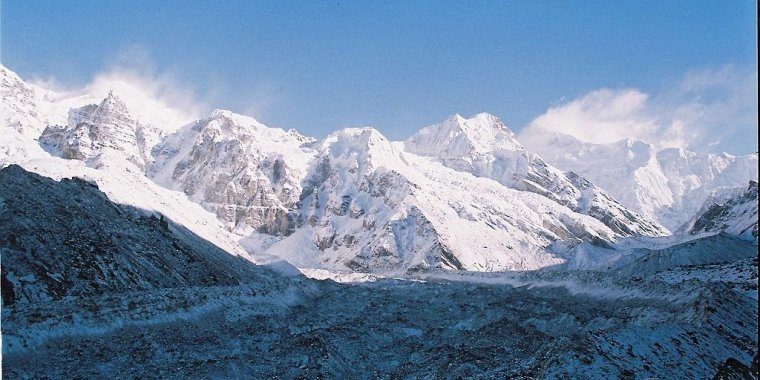| News / Science News |
Bulk of Himalayan glaciers could vanish by 2100
Rising temperatures will cause at least a third of the ice in the Himalayas to vanish by the end of the century, endangering the lives and livelihoods of nearly two billion people who are dependent on glacier-fed rivers for their water resources.

Zemathang glacier in Himalaya. Photo: Amar Chandra/Wikimedia Commons (CC BY-SA 3.0)
The extended Himalayas, also known as the Hindu Kush Himalaya (HKH) area, includes several of the world’s highest mountains that are strung out over 3,600 kilometres across Afghanistan, Bangladesh, Bhutan, China, India, Myanmar, Nepal and Pakistan.
Sometimes referred to as the ‘third pole’ after the Antarctic and Arctic circles, its glaciers feed 10 of the world’s most important rivers.
According to the study, even if the world succeeds in limiting increase in global warming to 1.5 degrees Celsius, 36 per cent of the glaciers will completely melt by 2100. In a business-as-usual scenario where heat-trapping carbon emissions are left uncontrolled, the glacier loss could extend to two-thirds, exposing the black rock of the ice-covered mountains.
The five-year study involving over 350 experts assesses impacts on Himalayan glaciers and potential consequences on river flows, rainfall patterns and human well-being. It provides policy-oriented solutions for decision-makers in taking adaptation and mitigation actions.
Consequences for the people living in one of the world’s most fragile and disaster-prone mountain regions will range from worsened air pollution to an increase in extreme weather events. But it’s the projected reductions in pre-monsoon river flows and changes in the monsoon that will hit hardest, throwing urban water systems and food and energy production off kilter.
The pace of warming in the Himalayas is significantly higher than the global average and the glacial melt happening faster than in the Arctic and Antarctic regions. Most of the Himalayan glaciers could disappear faster than those elsewhere in the world.
The study’s projections say warming-induced glacial melts will spike dangerously, increasing river flows, between 2050 and 2060, exacerbating the risk of high-altitude glacial lakes overflowing and, consequently, flooding communities. But after the 2060s, river flows will substantially plunge.
Hydropower generation — that meets much of the region’s electricity needs — will significantly go down after 2060. Declining flows will adversely affect farming communities across the region as well as the food needs of 1.5 billion people living downstream of 10 major rivers, including the Ganges, Yangtze, Tsang Po and the Indus. (SciDev.Net)
YOU MAY ALSO LIKE




